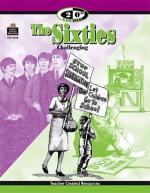|
This section contains 459 words (approx. 2 pages at 300 words per page) |

|
A National Beginning.
In 1966 there were 114 educational-television stations, up from 52 in 1961. But they remained struggling local stations with little money and almost no national, quality programming. In 1967 the tide began to turn with two events. The first was the start of the Public Broadcasting Laboratory (PBL), an experimental news and features broadcast funded by the Ford Foundation and broadcast on educational television for two hours on Sunday evenings. The second was the publication of Public Television: A Program for Action, a report by the Carnegie Commission on the future of educational television.
Commitment of Ford.
While the programming produced by the PBL was widely derided as boring and without any real signifigance, the project underscored the commitment of the Ford Foundation to public broadcasting. From 1951 to 1977 the Ford Foundation donated more than $292 million to public radio and television, helping to support stations...
|
This section contains 459 words (approx. 2 pages at 300 words per page) |

|




